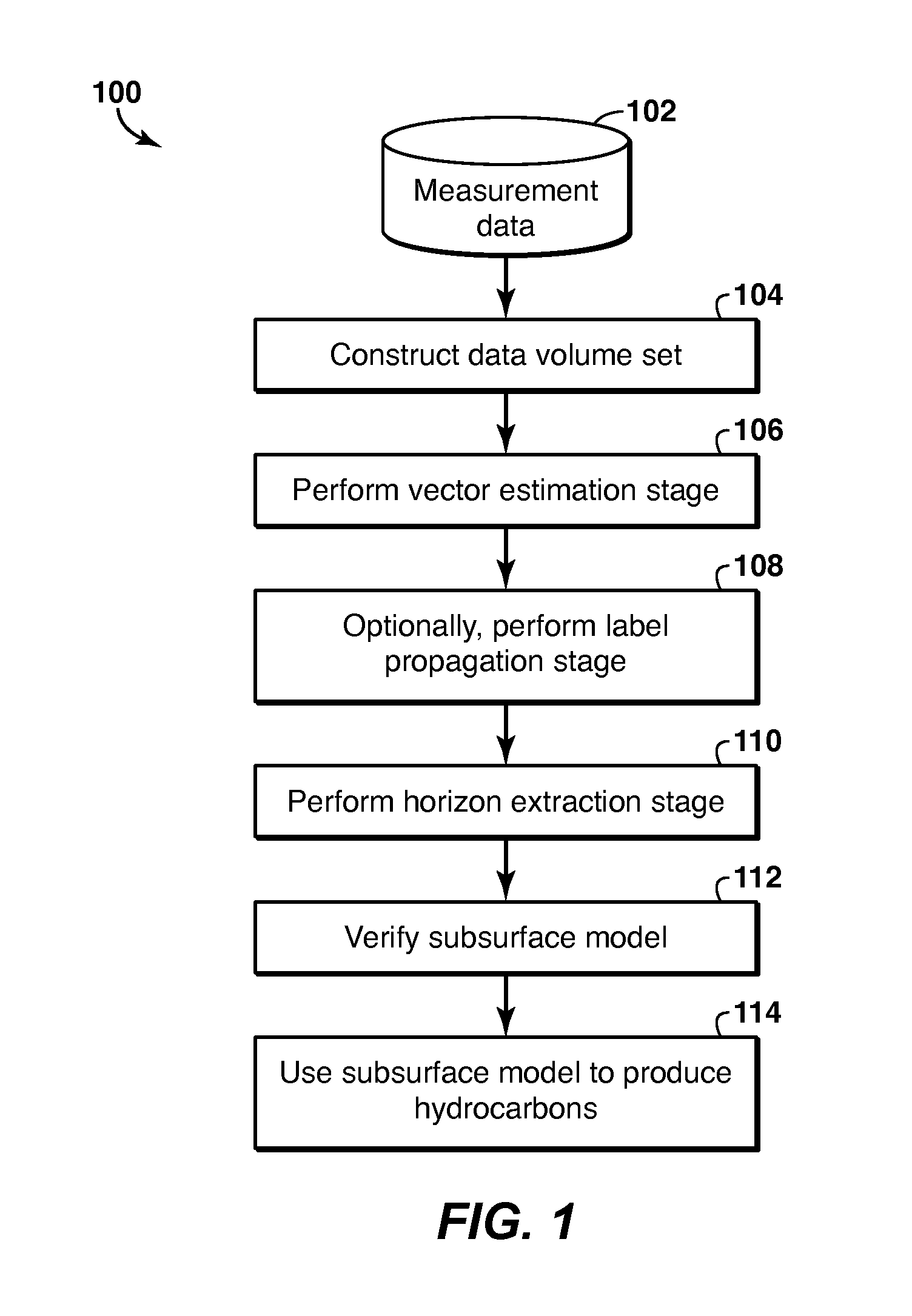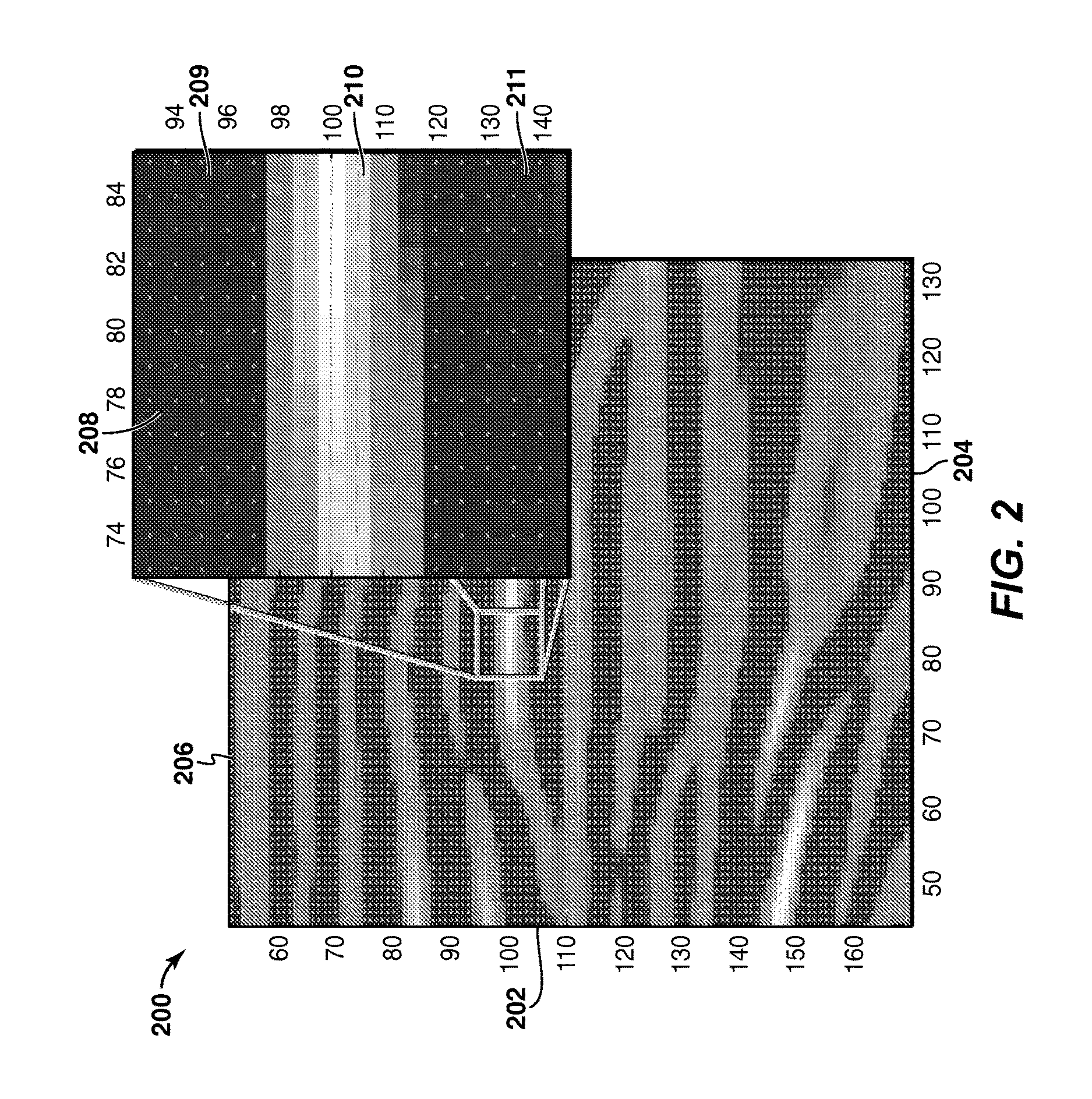Geophysical modeling of subsurface volumes based on horizon extraction
a geophysical modeling and subsurface volume technology, applied in the field of prospecting, can solve problems such as inconsistencies, poor imaging, and introduction of uncertainty, and achieve the effects of improving the accuracy of geophysical modeling
- Summary
- Abstract
- Description
- Claims
- Application Information
AI Technical Summary
Problems solved by technology
Method used
Image
Examples
first embodiment
[0046]As a first embodiment, a method of computing a tangent to the closest ridge curve within a fixed neighborhood around each spatial location P is provided for two dimensions (2-D). Given a spatial location P, which is represented as (Px, Py), the method involves extracting a neighborhood (denoted N) around it by equation (e1) and recording the amplitude (or attribute) values there denoted by W(Q).
[0047]The neighborhood N may be calculated by equation (e1):
N={Q|Qx−Px|y−Py| (e1),
where subscripts x and y refer to the spatial location along the x-axis and y-axis respectively, and the neighboring location or point Q has spatial coordinates Qx and Qy, and n is the radius of the neighborhood N. The neighborhood may include a neighborhood size and shape.
[0048]In this calculation, the data values, which may be as many as (2n+1)2, may be expressed as weights to approximate the y-values, which represent time or depth in a seismic line (e.g., composed of one or more seismic traces), as a l...
second embodiment
[0056]Alternatively, in a second embodiment, a method may involve using the iso-curves and iso-surfaces in an iso-surface method. In this method, local measurements are obtained in a tensor field that includes iso-surface tensor Tp at each location P in the data volume set. Each iso-surface tensor Tp is computed in a similar process. First, a similarity vector is computed using equation (e7):
[0057]v→PQ=σ(P,Q)(Q-P)Q-P;(e7)
where the similarity vector is {right arrow over (v)}pQ. The similarity vector {right arrow over (v)}pQ may be computed for each of its neighbor points Q in a predefined neighborhood (e.g., the neighbor point Q within a fixed distance of spatial location P). The magnitude of the vector is the similarity σ(P, Q) of the data values at the spatial location P and at neighbor point Q, which may be expressed in equation (e8):
σ(P,Q)=exp(−|data(P)−data(Q)|) (e8)
and the direction is the unit vector that joins spatial location P to point Q (here data(P) and data(Q) are the...
PUM
 Login to View More
Login to View More Abstract
Description
Claims
Application Information
 Login to View More
Login to View More - R&D
- Intellectual Property
- Life Sciences
- Materials
- Tech Scout
- Unparalleled Data Quality
- Higher Quality Content
- 60% Fewer Hallucinations
Browse by: Latest US Patents, China's latest patents, Technical Efficacy Thesaurus, Application Domain, Technology Topic, Popular Technical Reports.
© 2025 PatSnap. All rights reserved.Legal|Privacy policy|Modern Slavery Act Transparency Statement|Sitemap|About US| Contact US: help@patsnap.com



